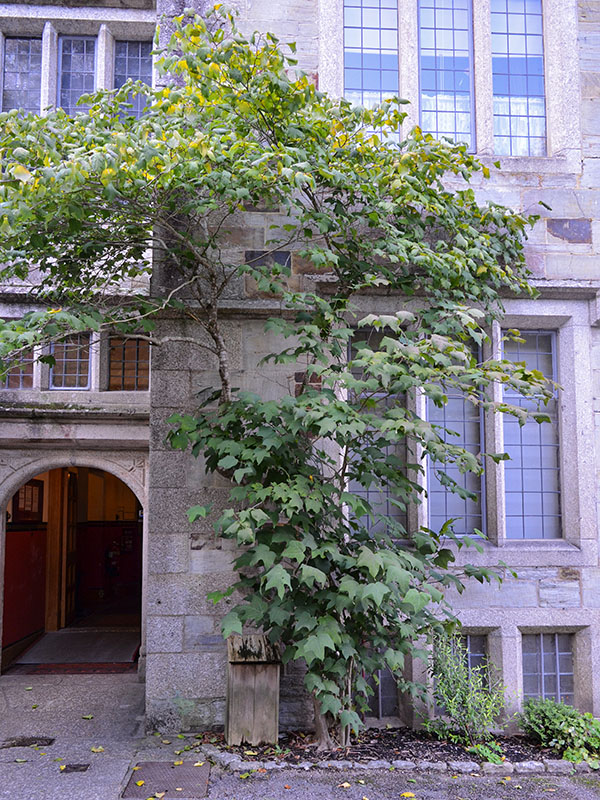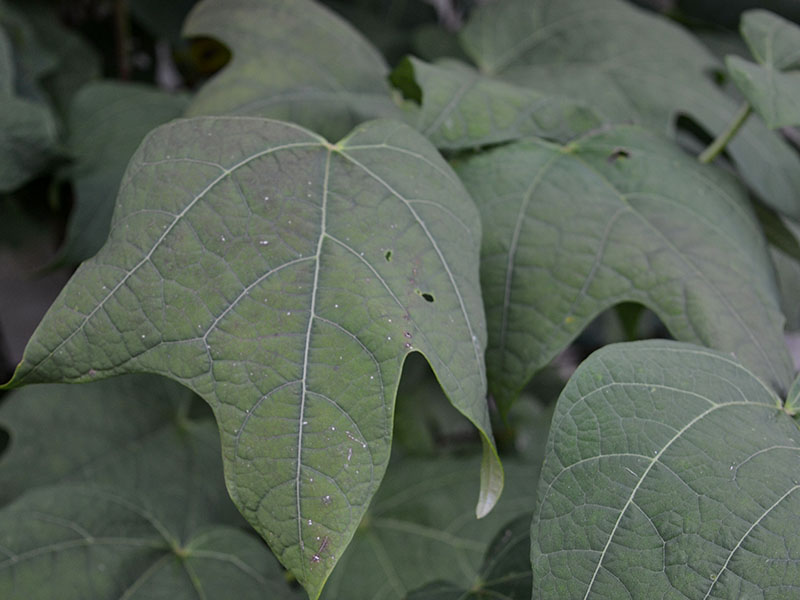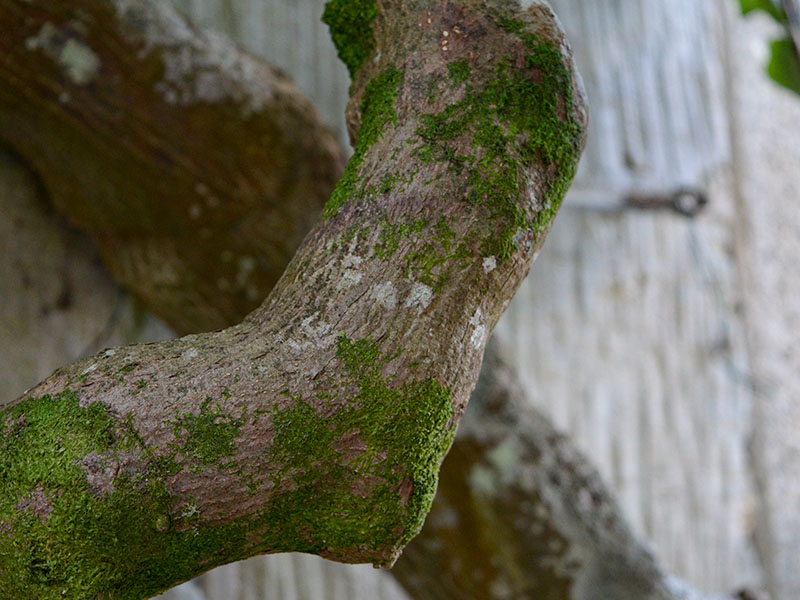| General Description | This is a modest, robust, deciduous tree that requires low maintenance. |
| ID Characteristic | It has broad dark green leaves, small white and yellow flowers, and produces blue egg-shaped fruit. It grows as a small to medium sized tree to a large shrub.
|
| Shape | As a shrub it will have a widespread and vase-like shape. When grown into a tree it will be pyramid-shaped and rounded. In either case, it will grow relatively wide. |
| Landscape | You are more likely to see it as a specimen in a botanical garden. However, it can also be used in private gardens and parks. It is quite capable of existing in large pots to be moved around in climates where it may only thrive seasonally.
|
| Propagation | The seeds must be put in moist soil, and stratification will take up to two months at around 2°C. Cuttings must be placed in moist and well-drained soil. In either case, during the early stages of the plant's life it is recommended that they are placed in a protected area of a warmer temperature until they are strong enough to handle winter.
|
| Cultivation | Requires moist and well drained soils in full-sun to partial shade in acidic, alkaline, and neutral soil.
|
| Pests | No pests or diseases. Popular among birds and bees because of the fruits and flowers.
|
| Habitat | Alangium platanifolium will grow in partial sun which means it will be found in forests under the shade of larger trees. It is not limited by pH levels in the soil. It is found in areas with a cool average temperature but cannot handle climates with sustained levels of severely low or high temperatures. It needs moist, well-drained soil. |
| Bark/Stem Description | Light grey and smooth when young. Takes on rough texture when older and becomes a darker grey. The stems grow in an alternate pattern.
|
| Flower/Leaf Bud Description | The buds are sizable, rounded and one-scaled. They appear fuzzy and red and stand out in the winter.
|
| Leaf Description | They grow in alternate arrangements. They have a palmate venation, a very broadly lobed margin, and are 10–20 cm long and are very thick. It is dark green in the summer and turns yellow during autumn.
|
| Flower Description | Dangling small cymes with 6 recurved white petals surrounding long, straight yellow anthers. The blooming period is from May to June.
|
| Fruit Description | It has 1 cm blue egg-shaped drupes which appear in the autumn months.
|
| Colour Description | The leaves are dark green from spring to summer and turn yellow during autumn, usually in November. Also, at this time small blue drupes will also be visible. White flowers with a touch of yellow will bloom in June. The bark will retain its usual grey-brown colouration throughout the seasons.
|
| Texture Description | It is a medium textured plant. It is a nice addition during the warm seasons but does not offer anything special during winter after the leaves have dropped.
|


